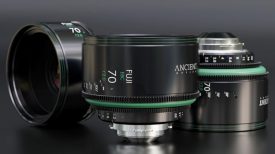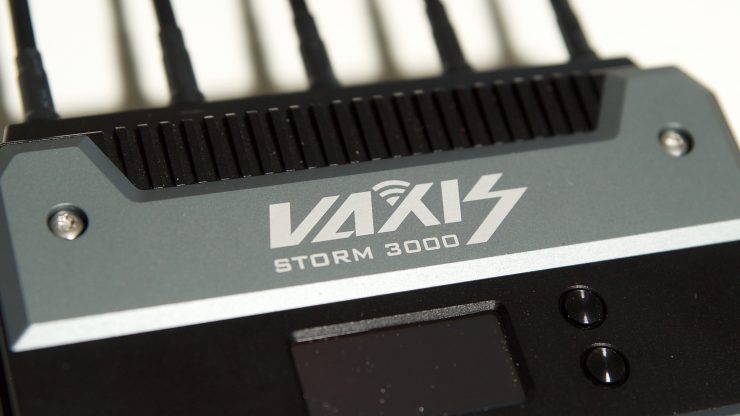
Vaxis Storm 3000 can transmit broadcast-class and uncompressed 3G SDI/HDMI HD video signals at distances of up to 1km with no compression and claimed zero delay.
Wireless video transmission systems are a crucial part of any production. They let everyone from the director, to the producer, the focus puller, the gaffer, and even hair and makeup see what is going on. The Vaxis Storm 3000 is the companies newest flagship wireless transmission suite and it is aimed at anyone who needed to send and receive wireless video signals over large distances.
MEET THE STORM 3000
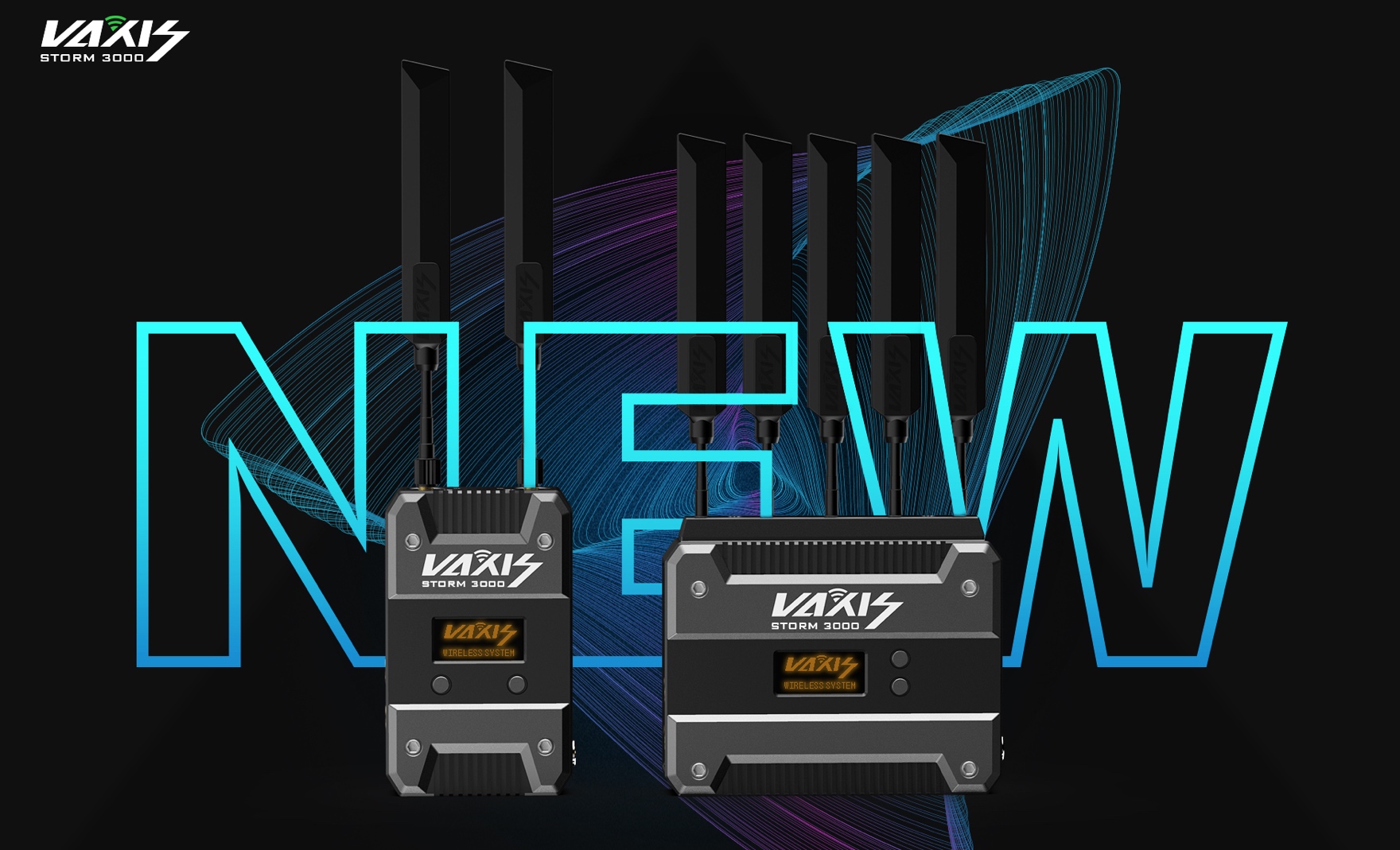
The Vaxis Storm 3000 Wireless HDMI/SDI Transmission Suite can send an uncompressed HD video signal via SDI or HDMI that the company claims has a zero delay. The suite includes one transmitter and one receiver, and both feature a 3G/HD SDI interface and an HDMI (1.3) interface. The Storm 3000 can transmit and receive 525i, 625i, 720p and 1080p (up to 60P) signals over a distance greater than 3000 ft. If both the SDI and HDMI have valid video inputs, the system will take the 3G SDI input as a priority.
As far as encryption goes, the Storm 3000 uses AES 128 encryption. This is especially useful on larger productions where every bit of vision needs to be kept confidential and away from prying eyes, but for solo operators or small productions, it’s probably not something you are going to be worried about.
Just like the Teradek Bolt 3000 TX, the Vaxis Storm 3000 TX and the RX both have an SDI loop out so if you want to connect a monitor from the same device you can.
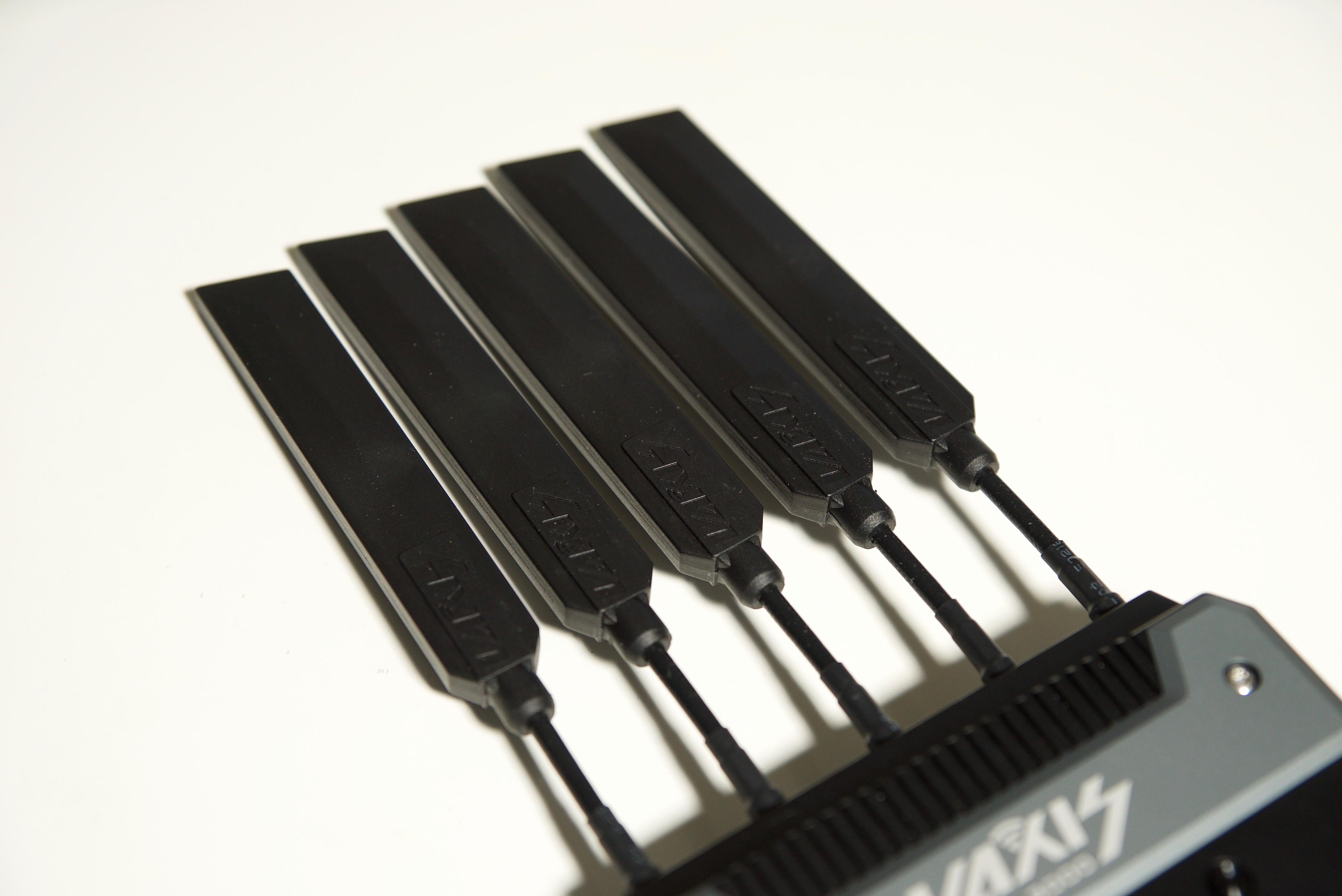
The transmitter uses two removable “Sword” antennas, and the receiver uses five antennas that are built-into the housing. The antennas look more like propellers from a drone than the type used on most other wireless devices. The reason behind this design is that it helps the antennas mitigate dBi loss from reflections because the polarization does not change when the waves reflect off surfaces. The “sword” antennas have ceramic plates inside of them that according to Vaxis, increases the signal strength. This “Sword” design was pioneered by Vaxis and now many companies such as Movcam and Kinefinity are using it.
They have also been designed to be very flexible and you can bend them around without having them break.
The Storm system operates on the 5.1-5.9GHz frequency band and it can be software configured to change the ISM band so that licenses can be given for it to work in different global regions. Getting certification for wireless devices can be tricky in certain countries around the world, especially Japan, Taiwan, and Korea. The Storm system has both FCC and CE approval and can be used in most parts of the world.
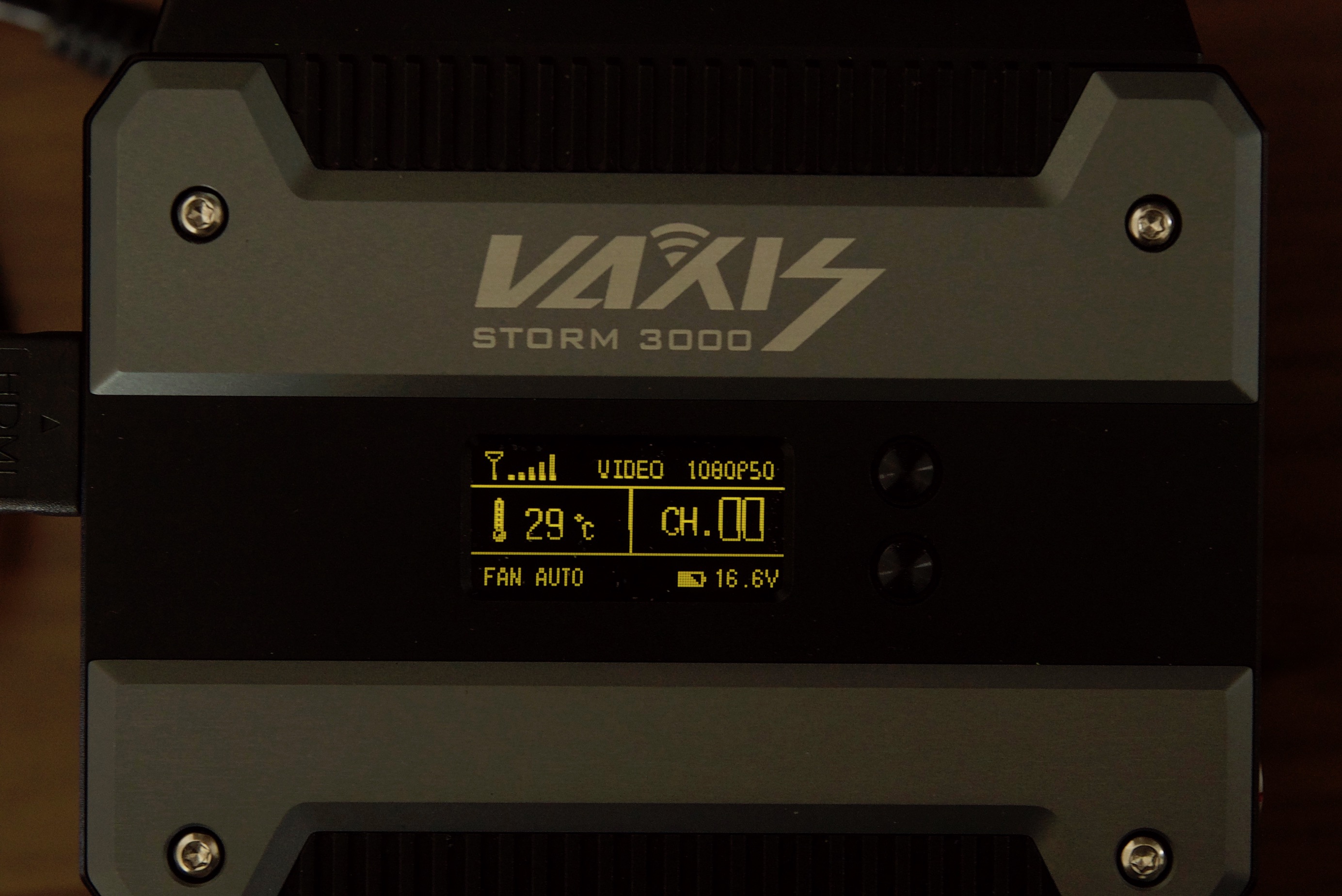
On the front of the transmitter and receiver, there is a control panel with an OLED screen and channel adjustment button. Up to 10 workable frequency channels can be chosen. On the OLED display, you can see indicators for wireless power status, temperature, video status, and receiver RSSI. The Storm 3000 lets you use up to 10 sets of wireless transmission suites all working simultaneously and in the same place (Multi-point to multi-point to transmit different images). There is also a USB input for upgrading firmware.
Another nice feature of the Storm 3000 is that it supports metadata, timecode and run/stop control for ARRI, RED, Canon, Panasonic, and Sony cameras.
Powering the suite
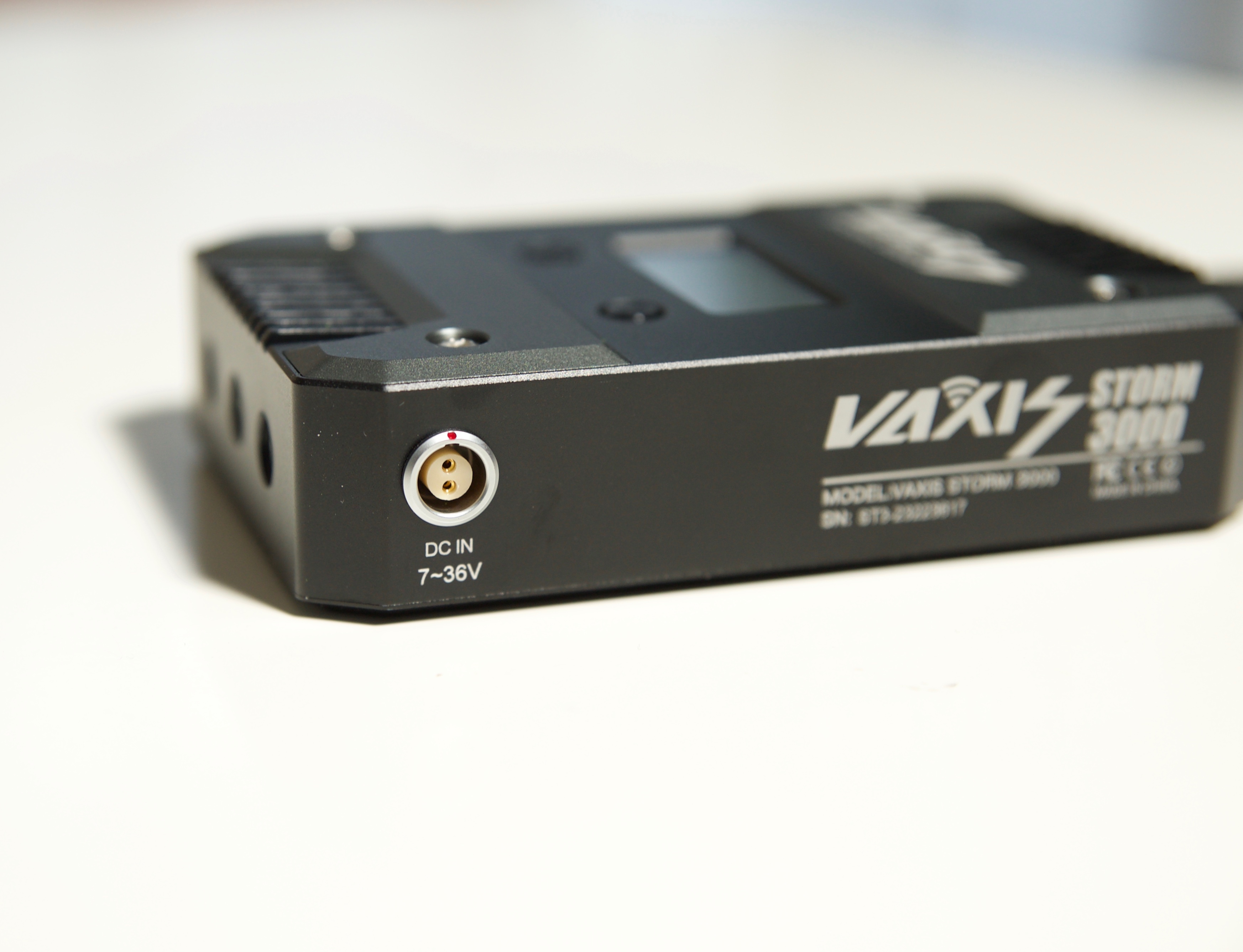
Unlike the transmitter on the Storm 500+ that features a SONY NP-F970 battery plate, the Storm 3000 doesn’t have a battery plate. It can only be powered via the 6.5-16.8V DC 2-pin female LEMO input. If you are not using a camera or a battery that can output power you are going to find the TX hard to use. An optional Sony battery plate for the TX can be requested by a customer prior to shipping.
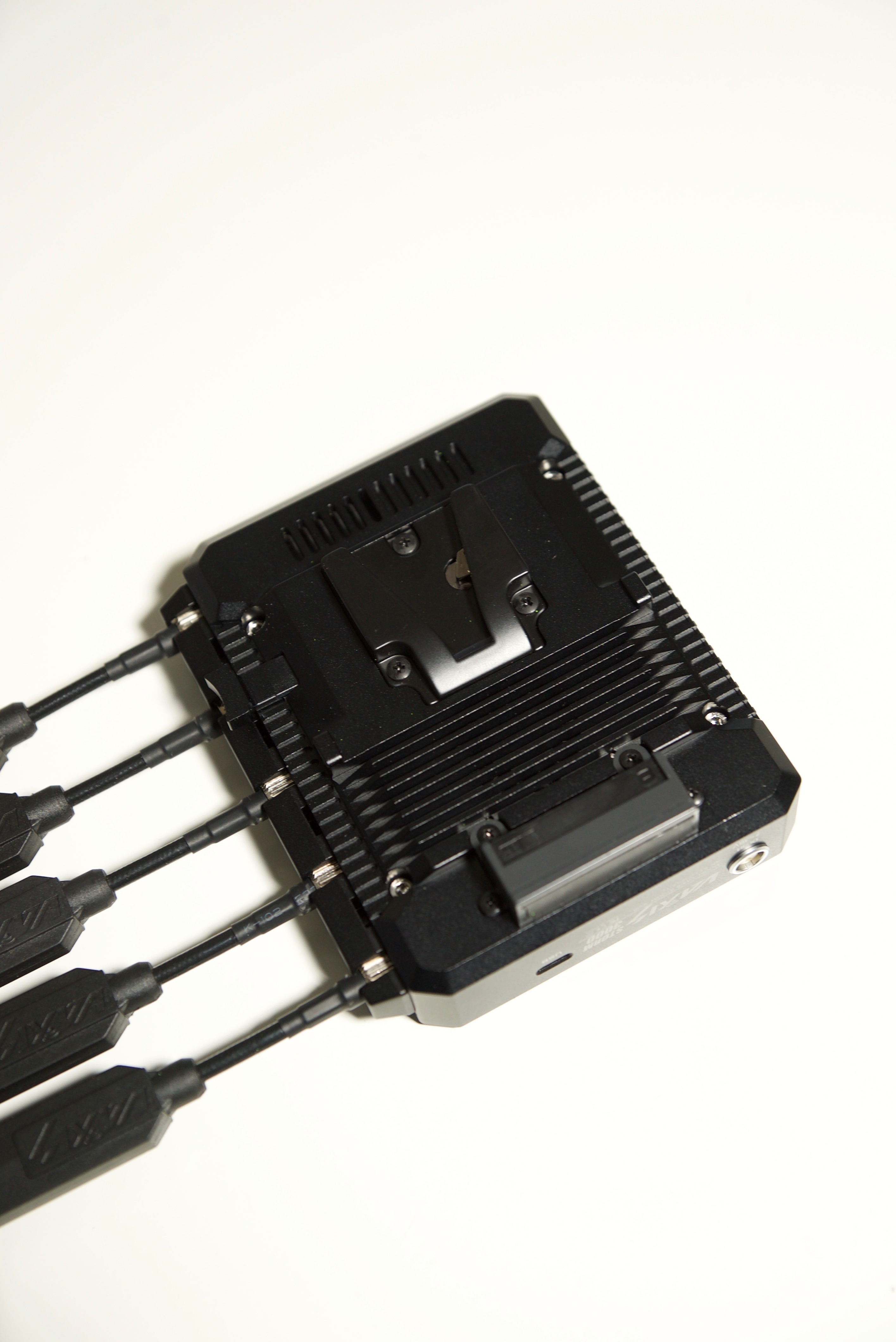
The receiver has a built-in V-lock or Anton Bauer Gold Mount battery plate (depending on which one you choose). The compact nature of the receiver allows it to use small-sized batteries such as the Hawkwoods Mini V-Lok. It also has a 6.5-16.8V DC 2-pin female LEMO input. The Storm 3000 transmitter draw <6.5W of power and the Storm 3000 RX draws <6W. I believe there is also optional Sony U-39 or Sony NP-970 battery plates available for the receiver.
The nice thing about the Vaxis Storm 3000 is that GM-Cine gives you 2x LEMO 2 pin male to D-Type conversion cables as standard. Not having to buy these cables as optional extras is a nice touch and a money saver. It also means you don’t have to go and try and source these cables from another company to power your wireless suite.
Build Quality
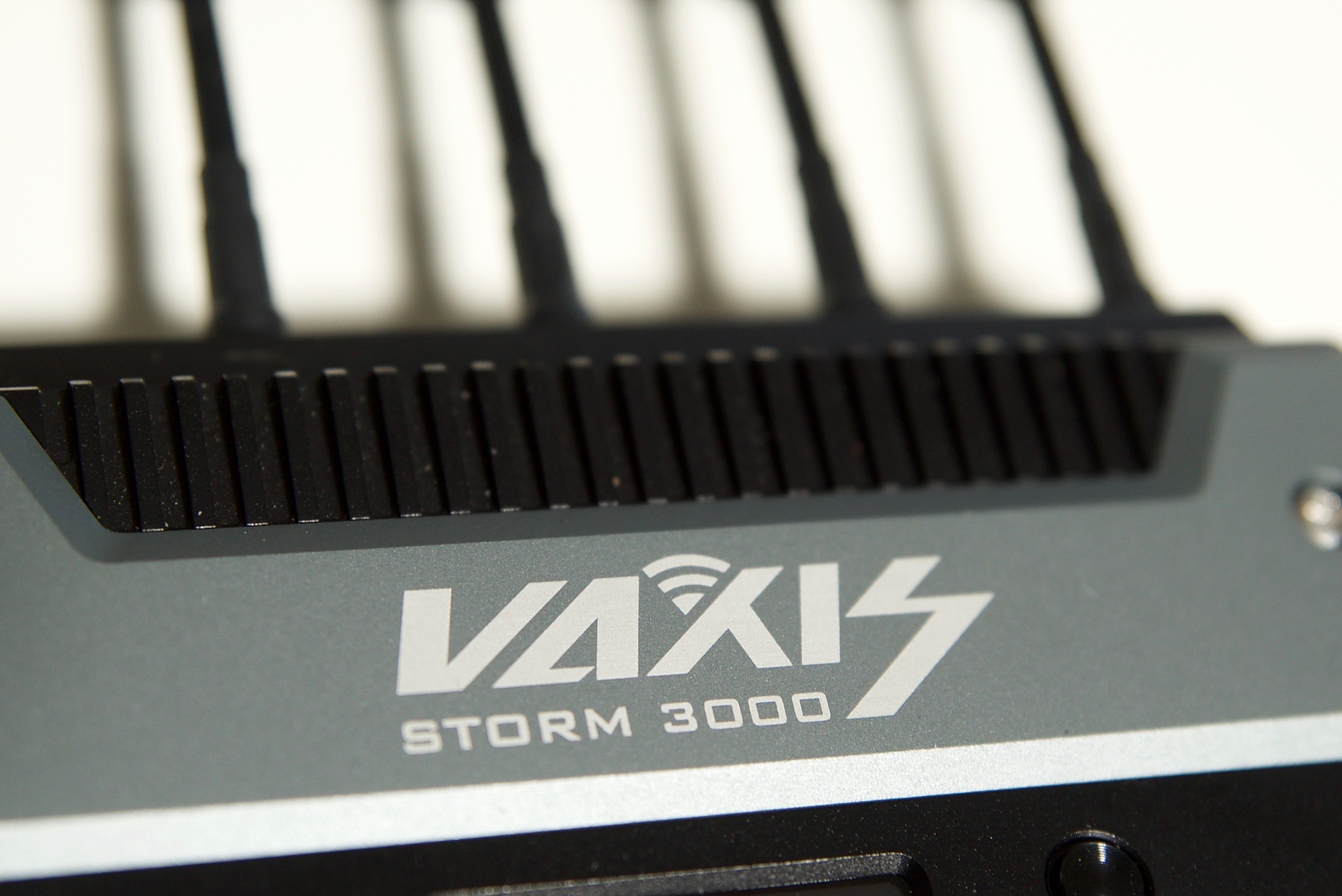
As far as build quality goes the casings of both the transmitter and receiver are made out of metal. They feel solidly made and are actually a lot lighter than they look. I weighed the transmitter and found that it was 325 g (11.46 oz) with the antennas. The receiver weighed 670g (23.63 oz) with the V-lock battery plate. To put this weight into perspective, the Teradek Bolt 3000 XT transmitter weighs 226 g (8 oz) and the receiver tops the scales at 376 g (13.3 oz). It’s important to note that the Teradek receiver doesn’t have a built-in battery plate.
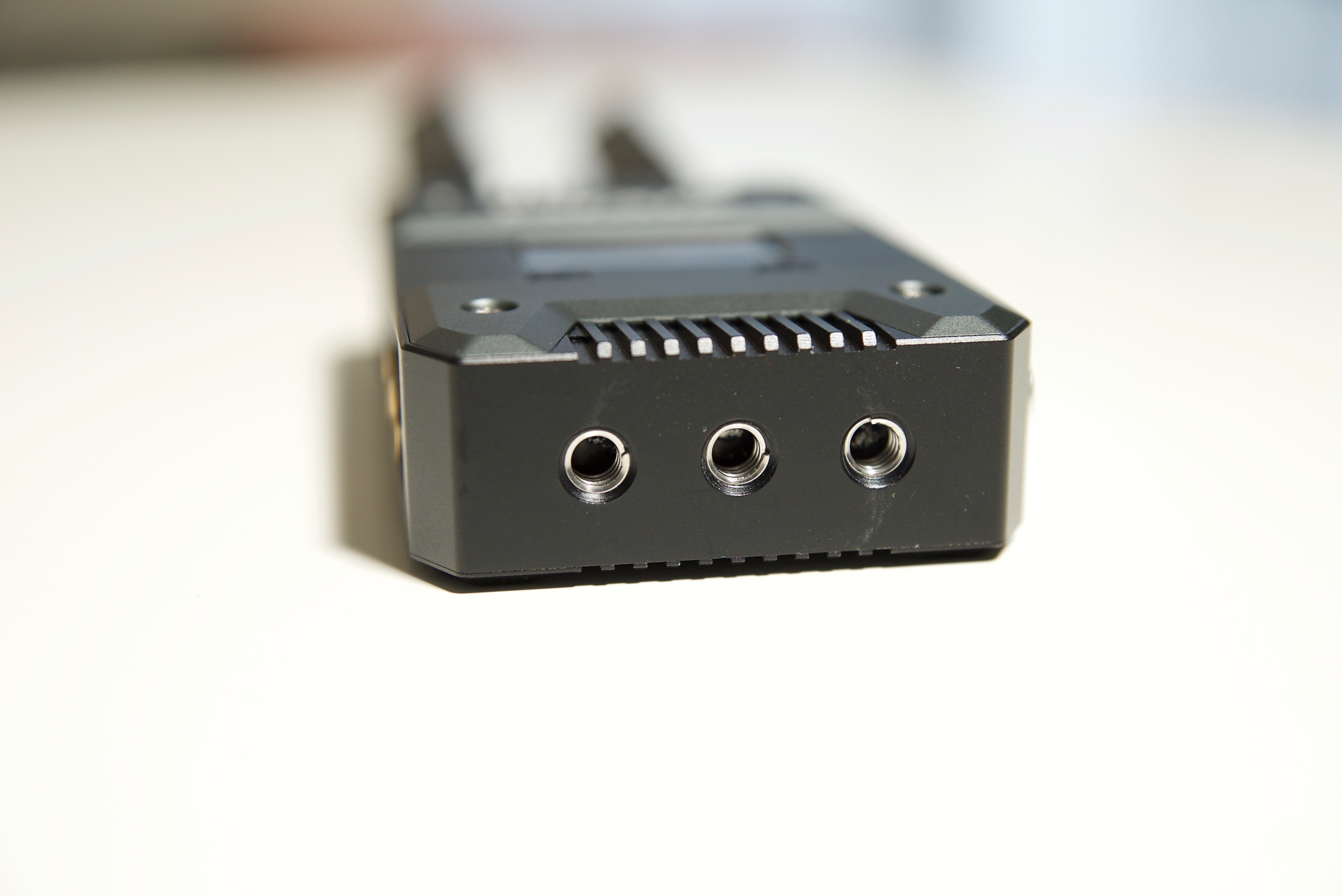
The connectors, inputs, and buttons on the Storm 3000 receiver and transmitter are all solid and well made. Similar to the Teradek Bolt series, the Storm 3000 has mounting points on the bottom of the transmitter and receiver. Unlike the Teradek Bolt series, however, the Storm 3000 only has 1/4-20″ mounting holes, there are no 3/8″. The new range of Teradek Bolt receiver units also features integrated NATO rails which can come in handy.
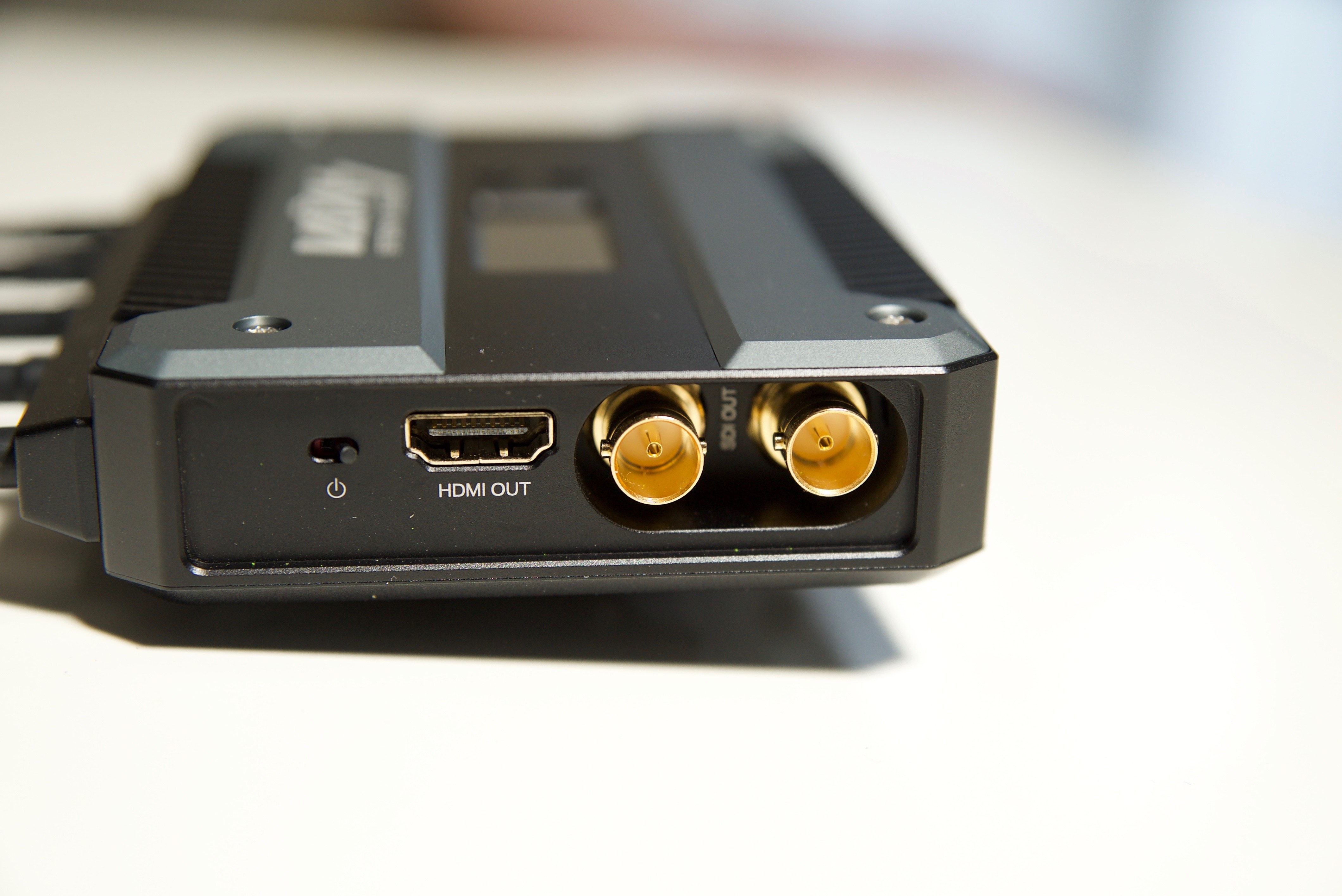
What I like is Vaxis have now counter sunk the SDI ports into the body of the transmitter and receiver. This is a nice move because it offers a lot more protection for the cables.
Size and Weight
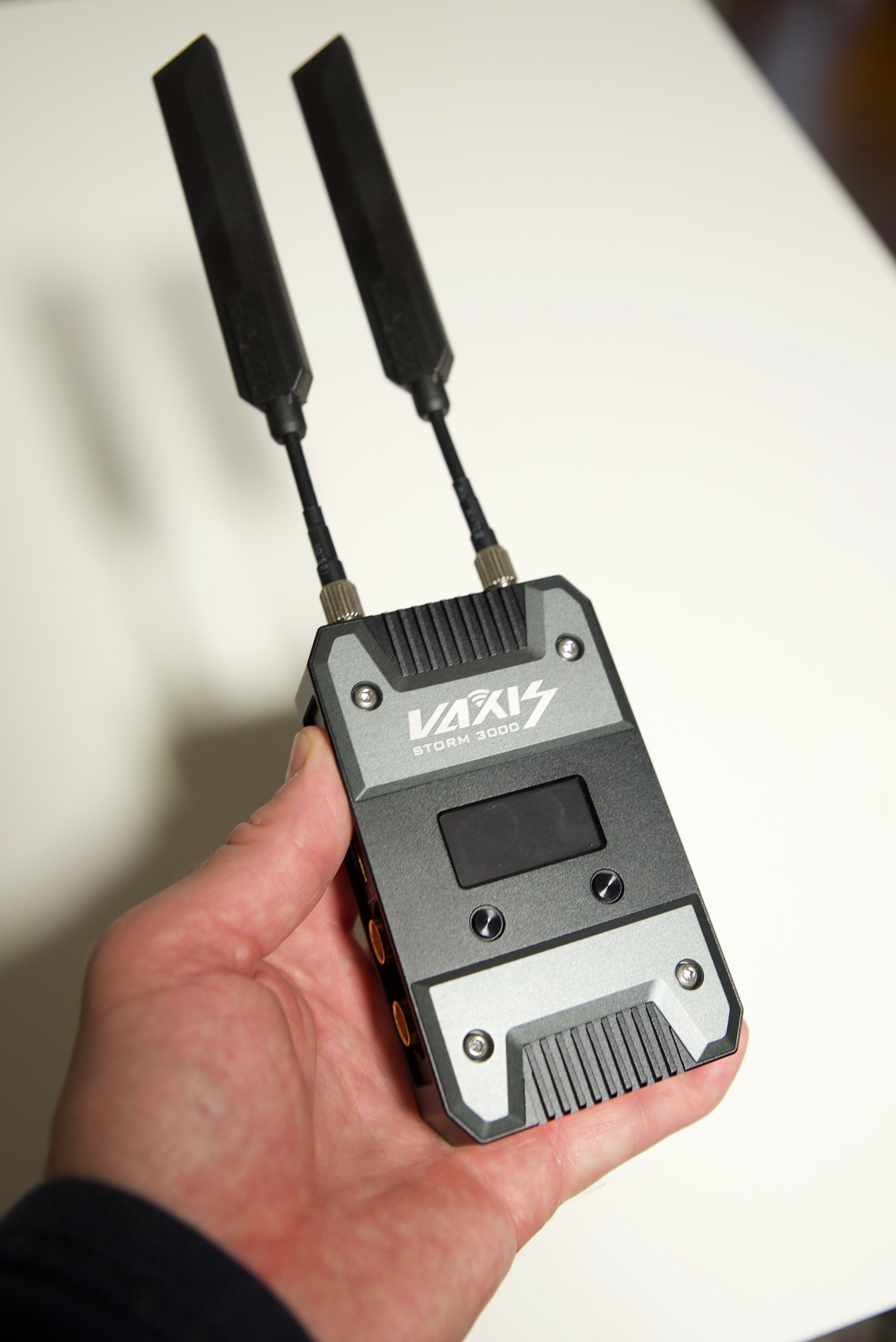
Size wise the transmitter is 131x 69 x 27mm (LxWxH) and the receiver is 135x 92 x 27mm (LxWxH). Again to put the physical dimensions of the Storm 3000 into perspective lets compare it to the Teradek Bolt 3000 XT. The Bolt 3000 XT transmitter has physical dimensions of 101.5 66 x 24 mm (LxWxH), the receiver is 138 x 89 x 24 mm (LxWxH).
In terms of weight, the transmitter tips the scales at 268 g (9.45) and the receiver is 405 g (14.28 oz).
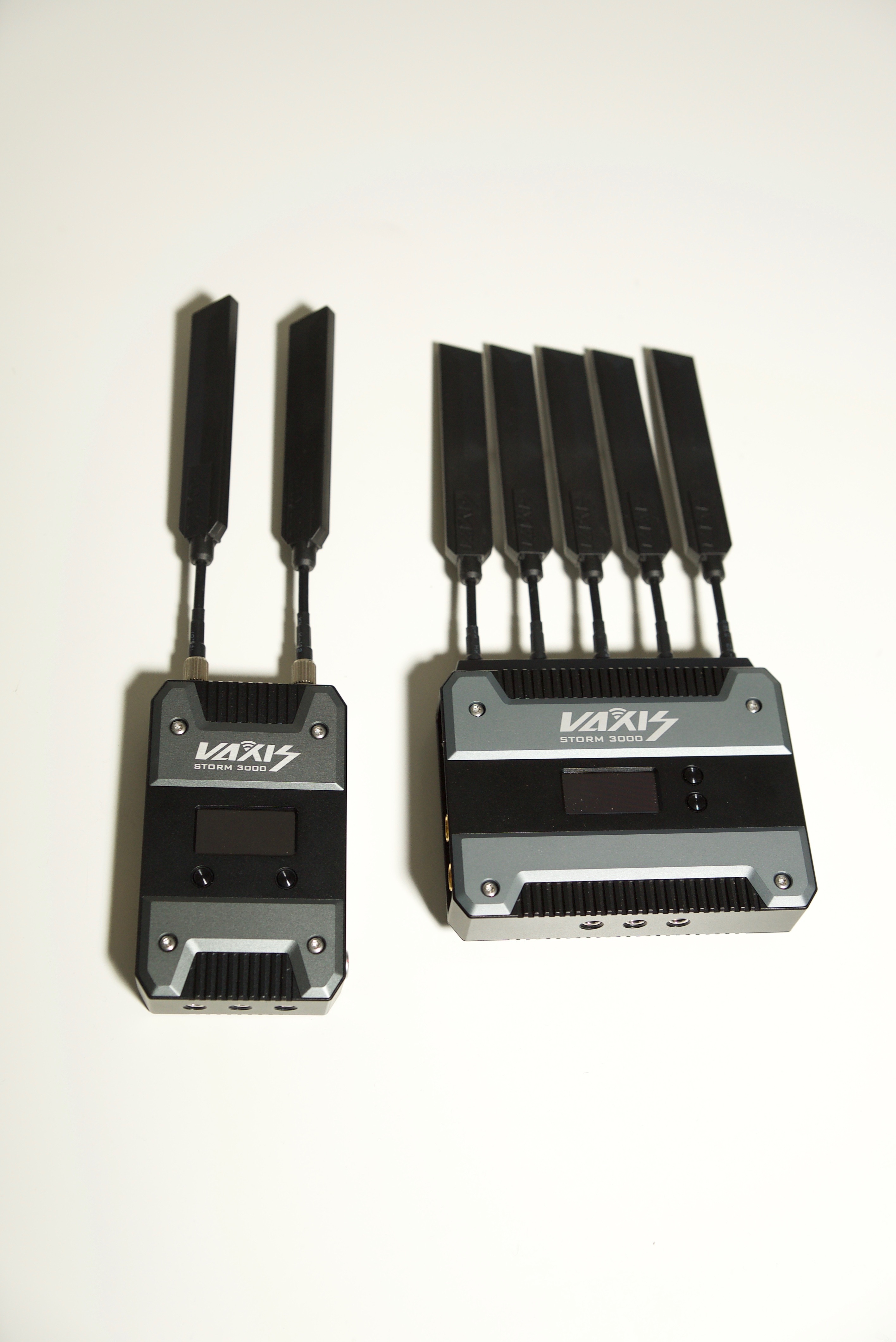
The receiver is a lot bigger than the transmitter and I imagine most of this has to do with the fact that Vaxis have chosen to incorporate a V-Lock or Anton Bauer Gold Mount battery plate. On one hand, I like the option of being able to power the receiver from a large camera battery, but on the other, I would prefer to have seen a more compact receiver. In saying that it’s not that much bigger than the Teradek Bolt 3000 XT.
What do you get?
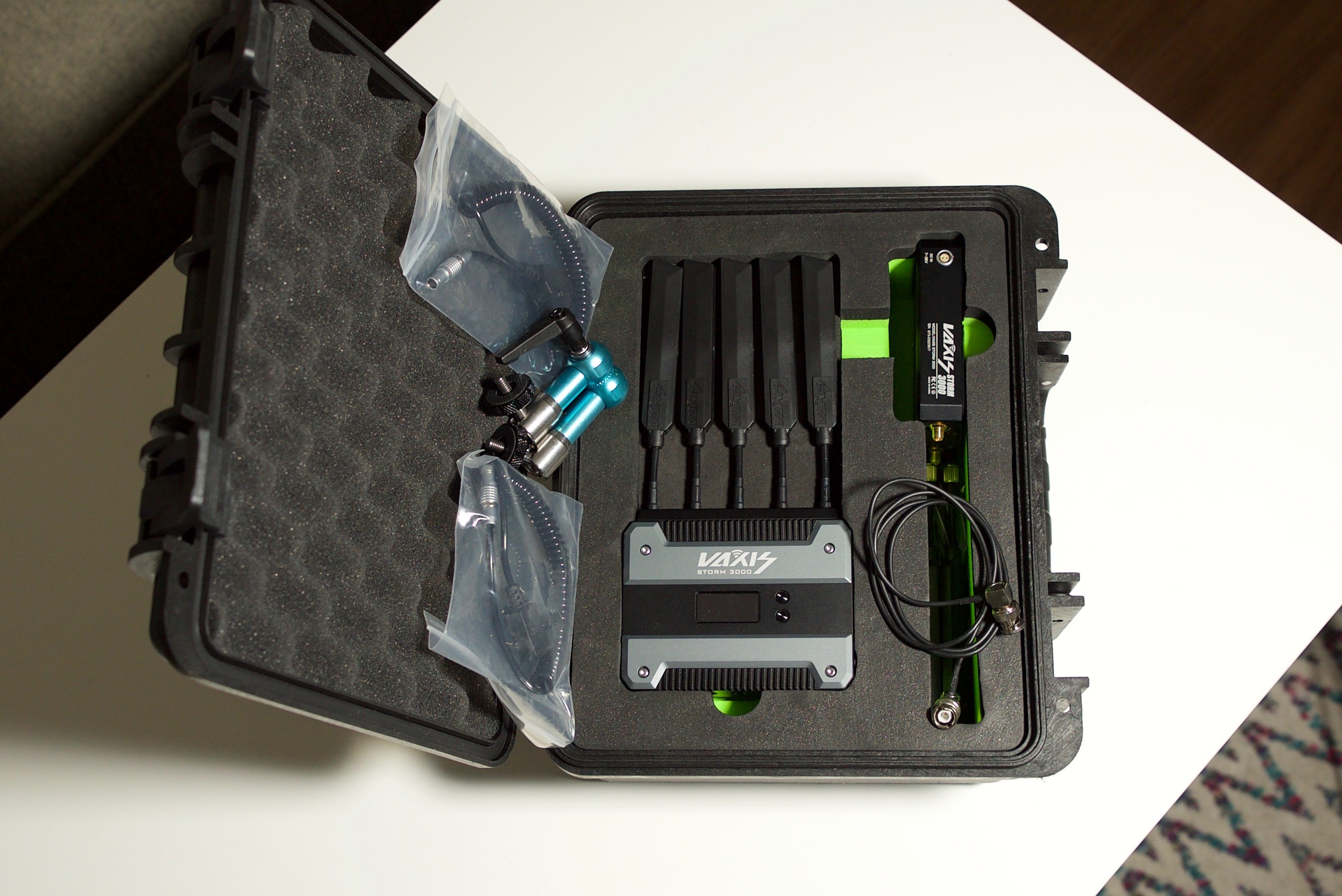
The suite includes one transmitter and one receiver. You also get the following:
- 7x 5GHz polydirectional and high-performance sword antennas (SMA female)
- 2x DC conversion cable (LEMO 2 pin male to D-Type)
- 1x 3G-SDI flexible cable
- 1x Vaxis Blue Noga Arm
- 1x User Manual
- 1x Hard transport case
All these items come in a nicely designed hard case that has laser cut foam. It’s nice to get all of these items as standard, but I was a little perplexed as to why they only included one 3G-SDI flexible cable and not two. I mean if you are going to put in two DC conversion cables why wouldn’t you include two 3G-SDI cables?
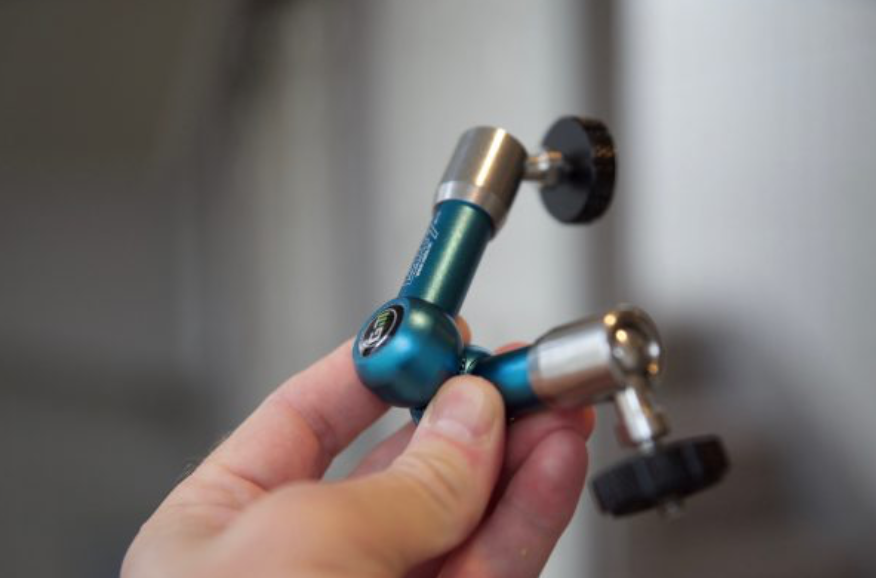
The included Noga Arm is well made and it’s nice to see a quality mounting device included with the kit as standard and not some badly made, cheap alternative.
Range
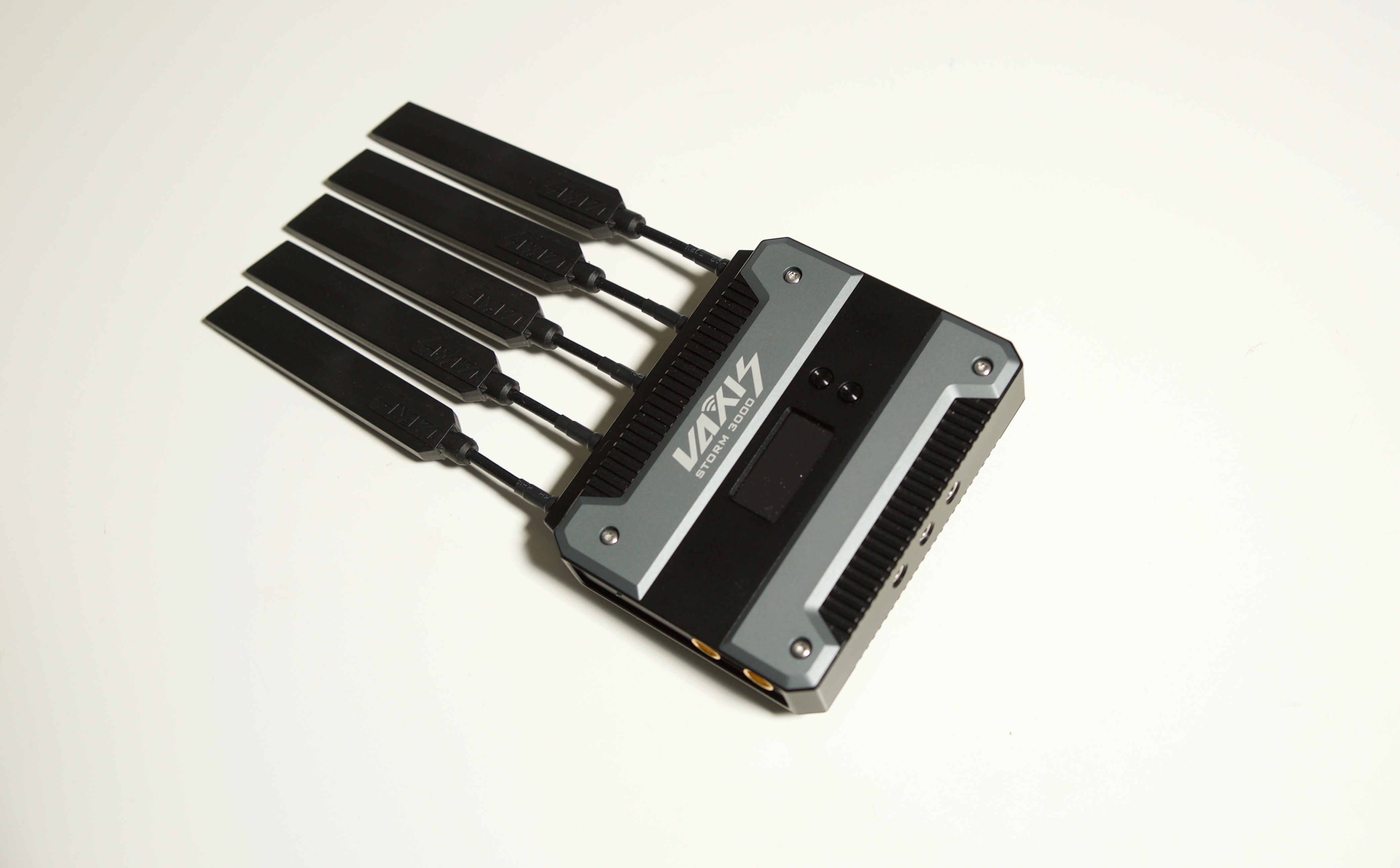
The Vaxis Storm 3000 Wireless HDMI/SDI Transmission Suite has a claimed range of up to 1 km (3280 ft). This is an impressive distance and Vaxis claims that they have enhanced the signals anti-interruption ability. The company also claims that the video quality loss of the Storm 3000 is significantly better than other same grade products at extreme distances.
Competition
| Teradek Bolt | Vaxis Storm 3000 | |
|---|---|---|
| Range | Up to 3000ft line of sight | Around 1km
(3280 ft) |
| Built-in HDMI to SDI Converter | Yes | Yes |
| Power Consumption | 8.5W | <6W |
| Audio Compression | 48kHz 24-bit PCM | 48kHz 24-bit PCM |
| Wireless Frequency | US: 5.19 ~ 5.23 GHz and 5.755 ~ 5.795 GHz EU & JP: 5.19 ~ 5.23 GHz DFS Frequencies: US: 5.27 ~ 5.55 GHz and 5.67 GHz EU & JP: 5.27 ~ 5.67 GHz (20MHz and 40MHz channels) |
5.1-5.9GHz |
| RF Power | 17dBm EIRP | Maximum 21dBm |
| Maximum Supported Resolutions | 1080p60 | 1080p60 |
| Kit Price | USD $10,190.00 | USD $5,680 |
The Teradek Bolt 3000 XT also has features such as backward compatibility with any Bolt of the same range, Sidekick II / LT / XT, and 703 Bolt. It also uses a unique AES 128 encryption algorithm to protect your video footage. It also uses Teradek’s proprietary software utilities, including a manual frequency-selection tool, 3D LUT engine, and a 5GHz spectrum analyzer to keep an eye on interference in your area.
What you also need to keep in mind is that Teradek units are everywhere and they are stocked by rental houses all over the world. What this means is that you happen to have a problem or need a replacement unit you can get one very quickly. If you have a problem with the Vaxis Storm 3000, you are going to struggle to find a replacement in a lot of places in the world.
Setup and ease of use
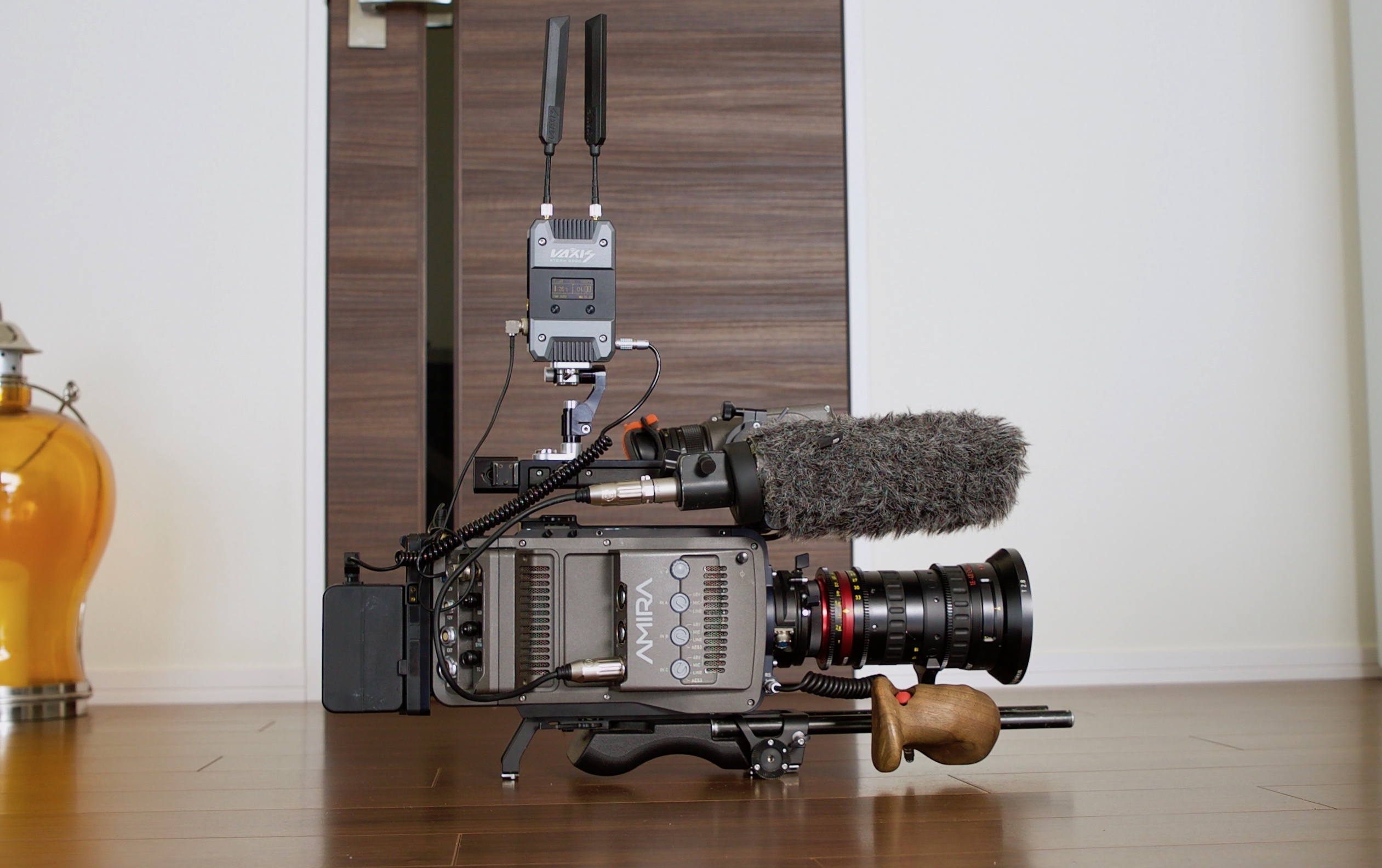
I found that the Storm 3000 was virtually plug-and-play. I hooked up the transmitter to my camera, connected an SDI cable and then hooked up the receiver to a smallHD monitor and turned everything on. Without having to do anything I got a picture within around 10 seconds. This is how a wireless system should be, quick and easy to use.
So far so good, but I wanted to see what would happen if I lost connection, so I turned the receiver off and then back on again. It took roughly 6 seconds for the receiver to re-establish a connection which was nice and quick.
Next, I turned the transmitter off, which is more commonly what may happen when you change over a camera battery or power the camera off and then on again. This time the connection was re-established in under 5 seconds. This was very impressive. So what about if I pulled out the SDI from the camera? Again the system re-established connection in under 5 seconds.
So what would happen if I suddenly changed the frame rate to 60fps (still in a 23.98p recording mode) on my camera while the system was on? Again it took just under 5 seconds for the picture to return. When I changed the camera back to 23.98fps it also took under 5 seconds to get the connection back.
Now the Storm 3000 is claimed to support up to 60p in full HD, so I decided to test that claim. Again this was no problem at all, and the Storm 3000 receiver re-established a connection within less than 5 seconds.
In the final test, I wanted to change the operating channel and see what would happen. I changed the receiver to a different channel and then changed the transmitter to the same channel. This time it took around 8 seconds till I had a picture back.
I really tried hard to fault the Storm 3000 with all these tests, and no matter what I did the system always re-established a connection without me needing to do anything. Not once did I have to reboot both the transmitter or receiver.
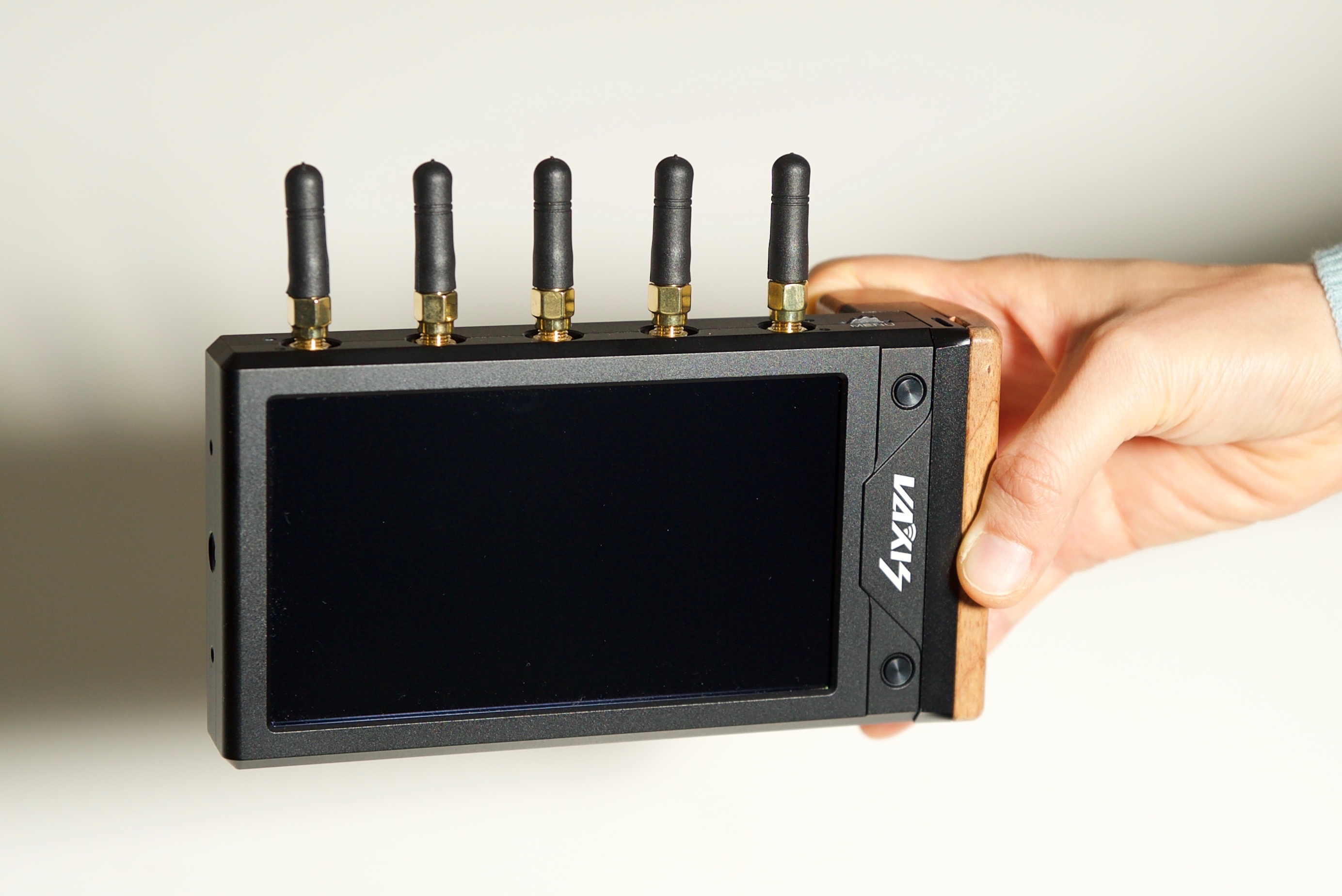
The Storm 3000 TX worked really well with the Storm Focus 058 and it made for a really simple to use and convenient solution.
Real-world performance
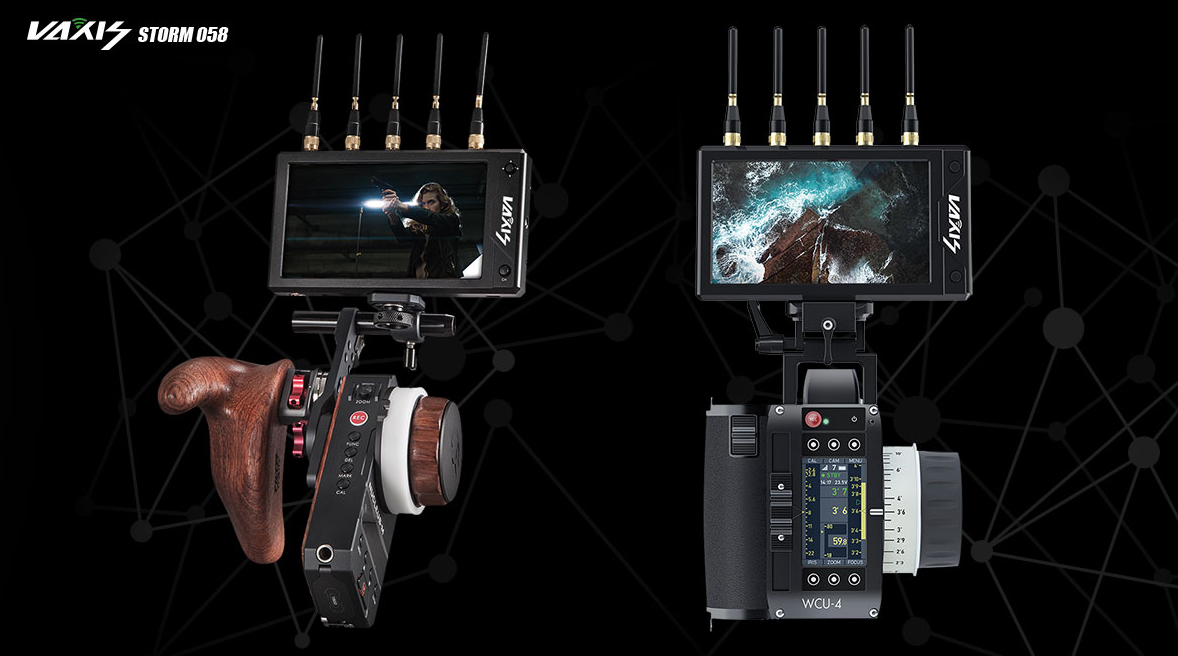
Pulling out connectors, changing settings and turning receivers and transmitters on and off is one thing, but how does it actually perform in the real world? Vaxis recommends that to get the best wireless transmission performance, both the transmitter and receiver need to be at least 1.5m above the ground. Keeping both the receiver and the transmitter at similar heights also helps with performance.
The real transmission distance is also relevant to the current air electromagnetic environment, because the system works in the ISM band, and therefore has exposure to all kind of 5GHz band air interference. Vaxis recommends users should do a manual frequency sweep by adjusting the frequency selection knob with a circle before using the equipment, that way you can select the best frequency channel for stable performance.

With this in mind, I decided to test the systems range and performance. To test the systems range I remained in line of sight of the camera and started walking away with the receiver. I found that I could get around 400m (1,312 ft) before the signal dropped out. Now, Vaxis claims a maximum operating range of 1km (3,280 ft), but this is only going to be achievable on flat, open terrain where there is little wireless interference. I did this test in the middle of Tokyo which is one of the most heavily congested RF and WiFi traffic areas on the planet. I didn’t expect the Storm 3000 to reach anywhere near its claimed operating distance in this environment.
Whenever I review wireless video transmitters I do the test in the exact same place under the same operating conditions. This way I get a good idea of how various competing systems compare. Below you can see how other wireless video systems faired under the same testing conditions.
Movcam DarkTower DT2000: 450 m (1476 ft)
SmallHD 703 Bolt and Bolt 3000 TX: 200 m (656 ft) it’s important to note that the SmallHD 703 Bolt has a range of just 91.44 m (300 ft)
Vaxis Thor 800ft+: 300m (984 ft)
I did find that the receiver needed to be facing towards the transmitter and you have to be careful not to block the top of the receiver where the antennas are. If you place your hand or something over the top of this part of the receiver the signal tends to disappear fairly quickly.
When the signal did disappear, I had to wait until I was back in range before it re-connected. When it did lose the connection it was able to re-establish without the need for re-booting the transmitter and receiver.
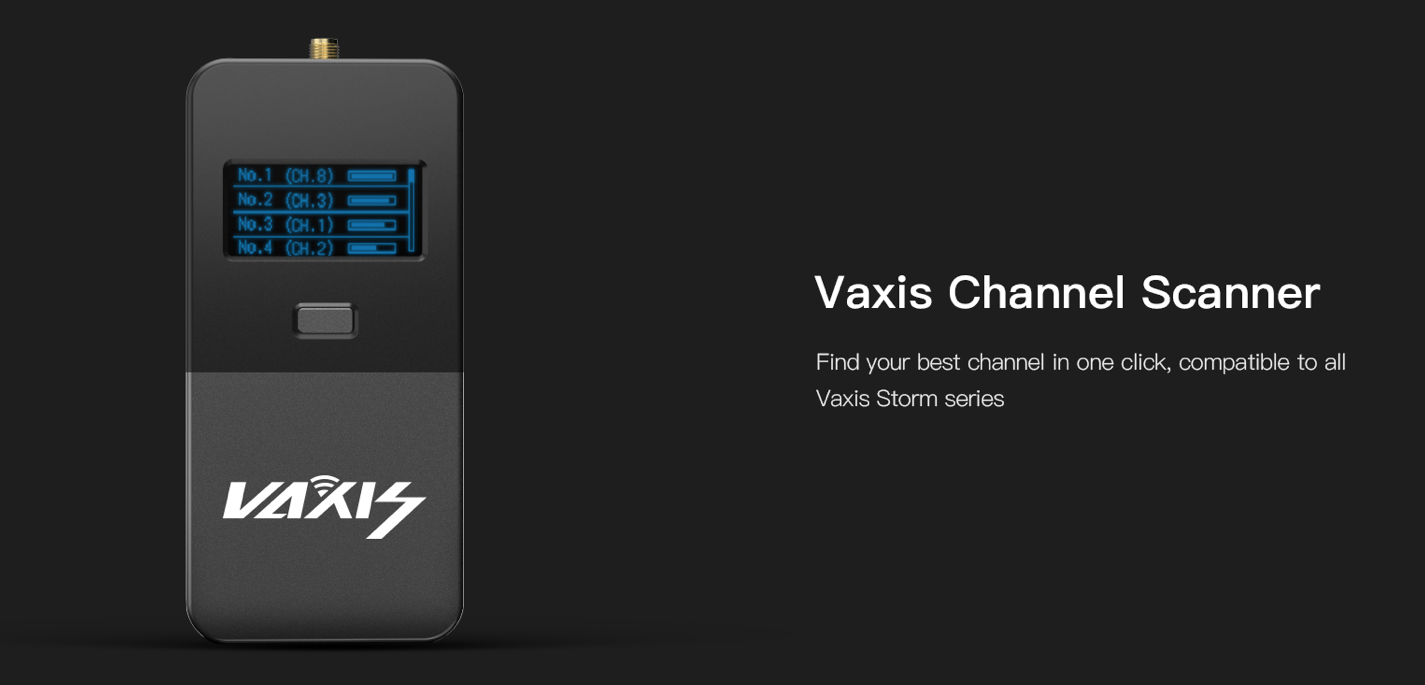
Vaxis does make an optional Channel Scanner unit ($95 USD) that you can purchase that allows users to find the least congested channel to operate the system on.
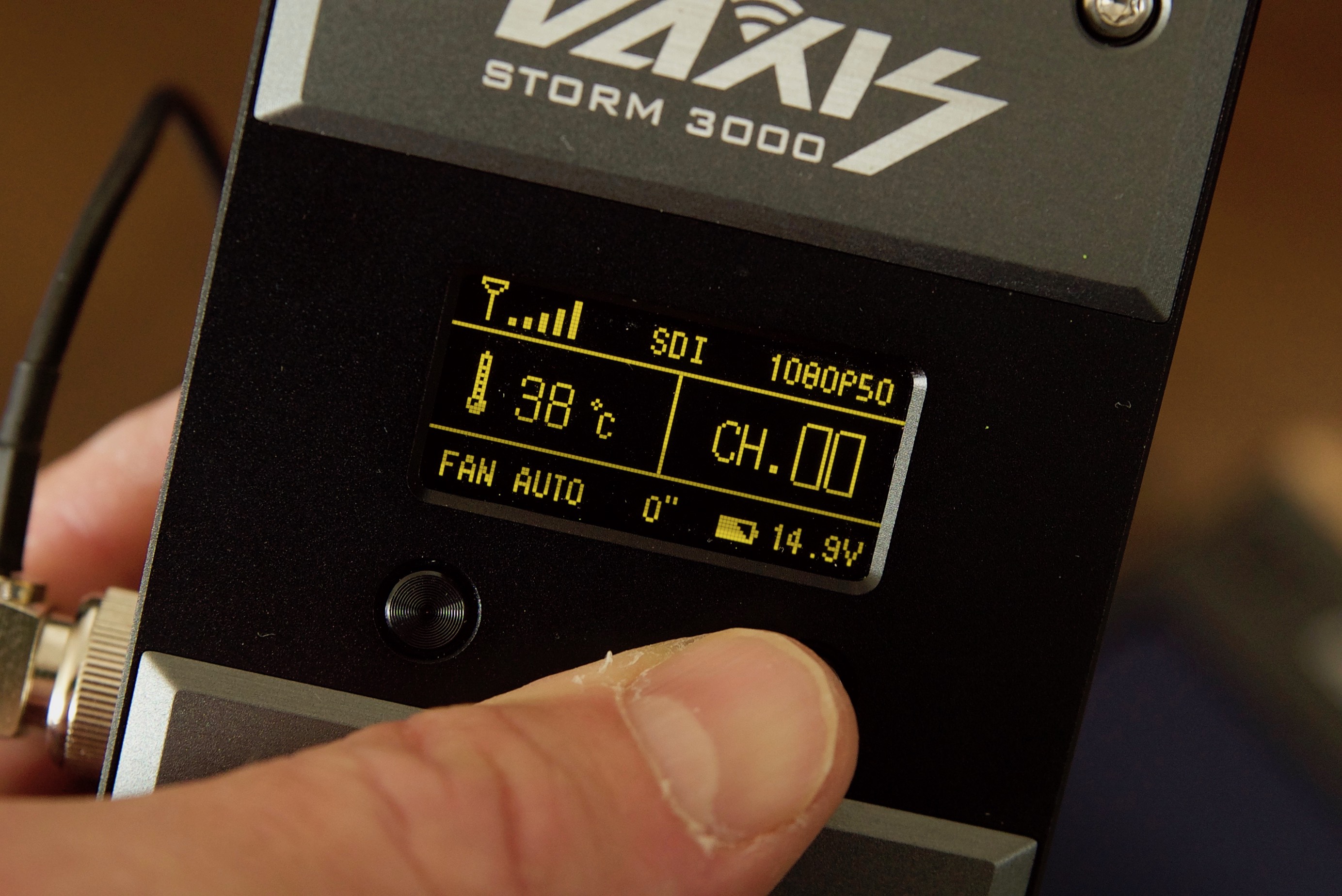
What I did like is that when you press the right button of the Storm 3000, you can open or close a new 0″ function that gives you 1 less frame delay than when it is used in regular mode. This is nice because it effectively gives you zero delay on playback when using the ARRI Alexa Mini.
Pricing and availability
The Vaxis Storm 3000 Wireless HDMI/SDI Transmission Suite retails for $5,680 USD. This is far from pocket change, but it is significantly cheaper than the competing Teradek Bolt 3000 XT, which retails for $10,190 USD.
Conclusion
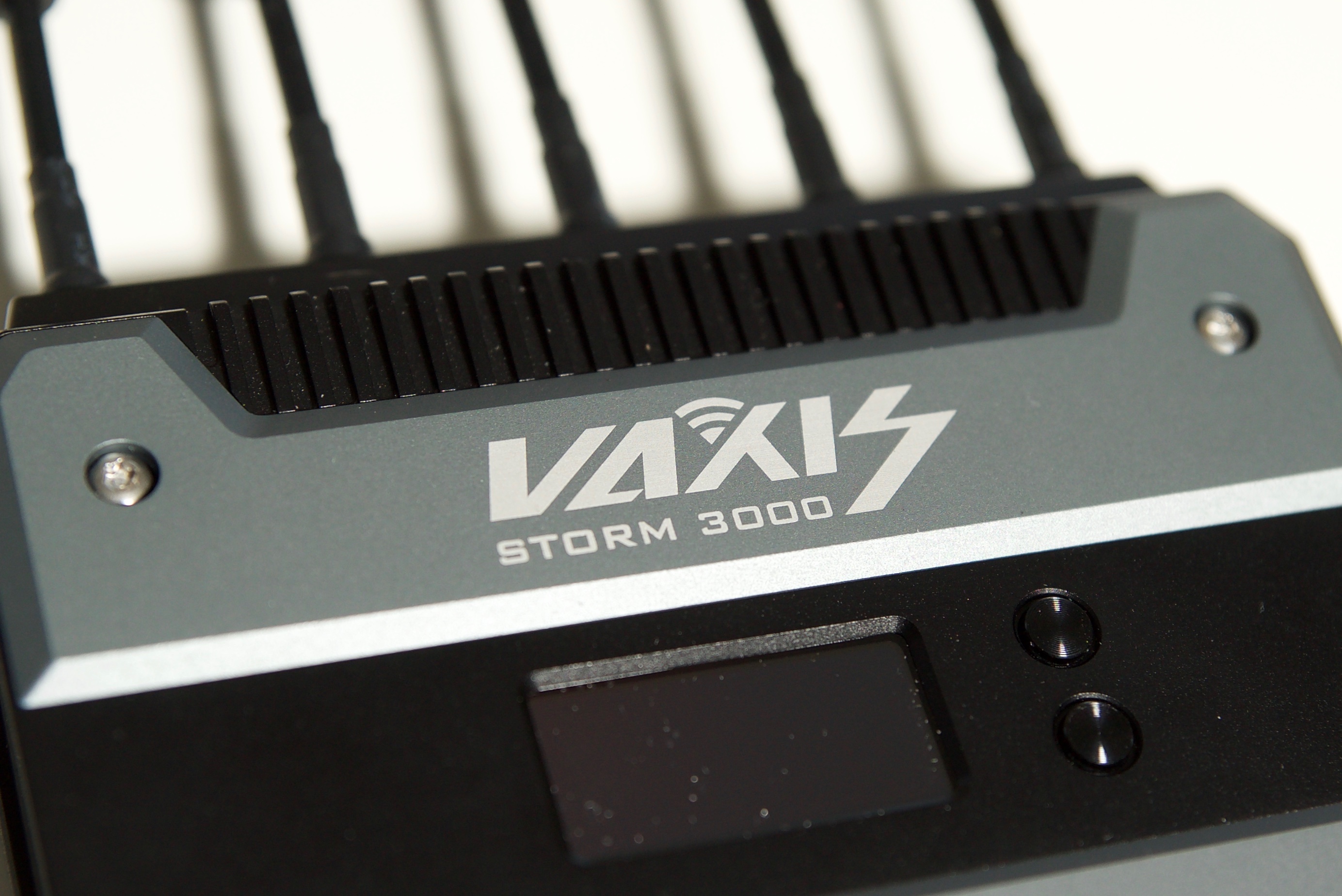
If I’m going to use a wireless video transmission system it has to be easy to set up, easy to power and most importantly reliable. If you are purchasing a high-end system such as the Storm 3000, reliability has to be rock solid. From my time testing the Storm 3000 I found it to be very reliable and easy to use, even over large distances.
I like its compact size, design and power options. My go-to wireless video system is the Vaxis Thor 800+ (see our full review below) which I’ve been using for over a year. In that time I am yet to have a problem using it on any production. It has been reliable and rock solid. I would expect that the Vaxis Storm 3000 would offer that same type of long term reliability and robustness.
The unit does face very stiff competition from the Teradek Bolt 3000 XT. Teradek is almost an industry standard, and it is the often the main wireless video system you see on high-end productions. Selling lower-end wireless video systems is a lot easier, but once you get up to the high-end, people tend to go with established brands that they know. Let’s hope this changes because the competition is good for everyone.
The Vaxis Storm 3000 does exactly what it’s supposed to do and it does it with minimal fuss. At $5,680 USD it is significantly cheaper than a lot of its competition.





